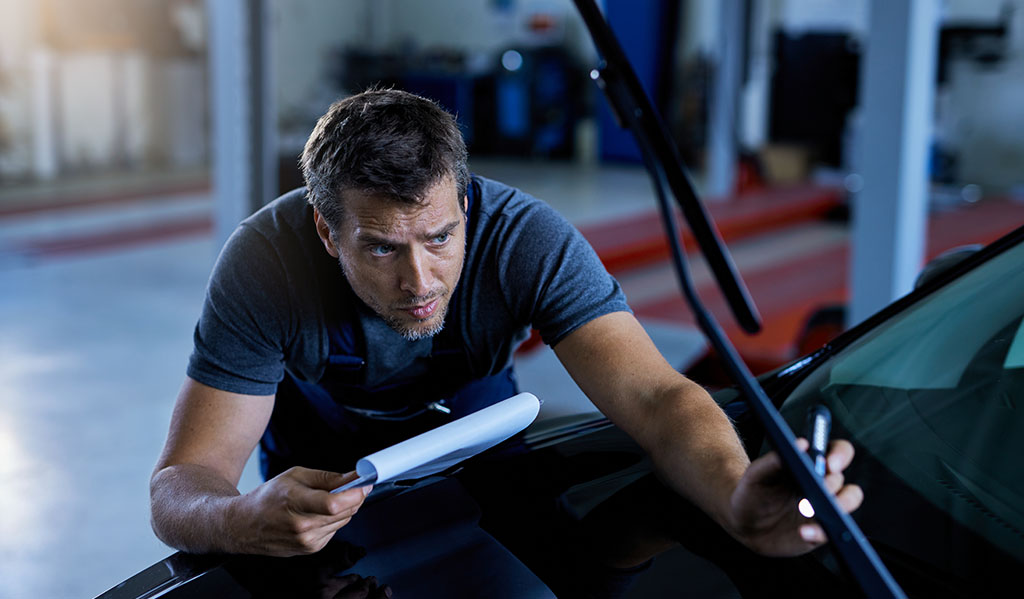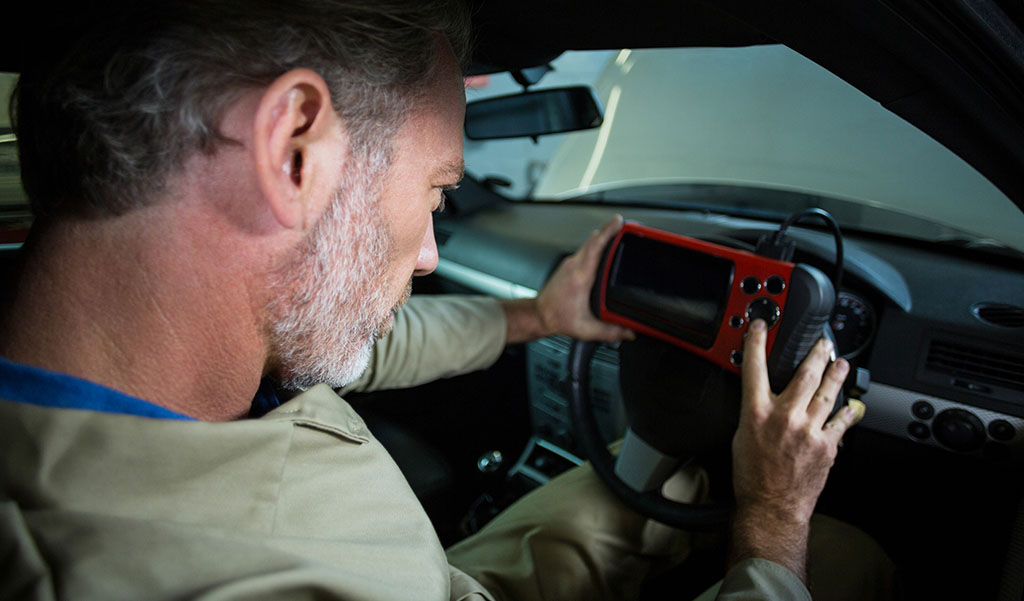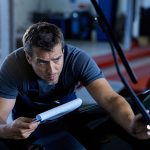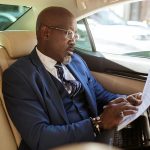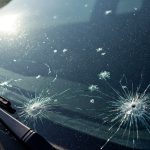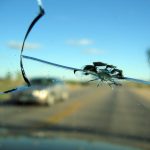You pick up your car after a windshield swap, and everything looks fine. No warning lights. The wipers work. The glass is clean. Then you hit the highway and your lane keep nudge feels off. Or your adaptive cruise brakes late. If your vehicle has a camera behind the glass, that’s the moment to ask a simple question: Is windshield calibration necessary after a replacement?
At Auto Glass Zone Mississauga, we also provide ADAS calibration services to ensure your vehicle’s advanced safety systems are properly aligned and functioning accurately after a windshield replacement.
What Recalibration Actually Is
On modern vehicles, a small camera sits behind the rearview mirror. That camera “sees” lane lines, cars, pedestrians, traffic signs, and light sources. When the glass comes out, the camera’s aim shifts by tiny amounts. A tiny angle change at the windshield becomes a big error down the road. That’s why shops perform windshield recalibration.
According to Transport Canada’s background on Advanced Driver Assistance Systems, these safety systems depend on cameras and sensors that must remain properly aligned to function as intended.1 When that alignment changes after windshield replacement, the ADAS camera can misread lane markings or distances—making recalibration essential for accurate performance.
Why Even Small Camera Errors Matter
Small misalignments have large effects on driving distance.
A 0.6-degree camera error can reduce automated braking reaction time by about 60 percent. A one-degree aim error can shift the stopping point by several feet at highway speed. That’s the difference between stopping short of a bumper and hitting it. It’s why the answer to “Is windshield calibration necessary?” is always yes on vehicles equipped with ADAS.
Canada’s Practical Rule: Calibrate After Replacement
There’s no single federal law in Canada that spells this out line by line. Still, automakers require calibration after the glass or the camera moves. Insurers in Canada treat calibration as part of bringing the car back to pre-loss condition. In practice, that makes it mandatory for any camera-equipped vehicle that had a windshield replacement. This is the clearest answer to why a windshield needs to be calibrated. The camera’s aim changed, and ADAS needs exact alignment to work properly.
Some drivers first consider calibration after noticing a chip or a small crack near the camera mount. It’s useful to understand how different windshield crack types behave at highway speeds before booking a replacement. Small cracks can spread faster near the sensor area because of added stress on the glass.
How Calibration Methods Differ
Shops use two methods:
- Static calibration happens indoors with precise targets on a level surface. It usually takes about one to two hours for many vehicles.
- Dynamic calibration happens on the road at set speeds while the system “learns.” It often takes two to three hours, depending on conditions.
Some vehicles need both. Weather and road markings matter in Canada. Faded lines or winter grime can delay dynamic calibration, so shops often start with a controlled static setup.
Time And Windshield Calibration Costs In Canada
Plan for time and budget:
- Typical calibration time ranges from about 30 minutes to 2 hours, and complex cases can go past 3 hours.
- Calibration alone is commonly in the $300 to $600 CAD range, depending on the system and location.
- With glass and calibration together, dealership-level totals often land around $1,100 to $1,900 CAD. Some independent Canadian shops may quote less for the calibration portion.
Many Canadian insurers cover calibration when the manufacturer requires it after a replacement. That’s worth confirming on the claim.
Which Features Depend On Proper Camera Aim
A properly calibrated camera supports:
- Forward Collision Warning and Automatic Emergency Braking
- Lane Departure Warning and Lane Keep Assist
- Adaptive Cruise Control
- Traffic Sign Recognition and Automatic High Beams
If the camera is off, you might notice late braking, false lane alerts, or jumpy cruise control. In some cases, the vehicle will shut a feature down if it can’t trust the input.
Triggers Beyond Windshield Work
You might also need recalibration after collision repairs, suspension changes, a ride height change, sensor replacement, or when diagnostic codes call for it. A small stone-chip repair usually doesn’t trigger calibration if the camera and its bracket were never disturbed, but the shop should check the VIN-specific procedure.
Helpful Tip: Even after a successful calibration, residue or film on the glass can affect how well the camera “sees.” When removing any old decals, it helps to know safe ways to remove stickers from your windshield without scratching the glass or leaving streaks that distort camera vision.
Choosing Quality Glass And A Proper Setup
Automakers caution against low-spec glass for camera cars. Curvature, thickness, and optical clarity affect what the camera “sees.” High-quality, manufacturer-approved glass helps the camera read lane lines cleanly. Pair that with a controlled, documented calibration and you protect safety features, warranty position, and claim compliance.
FAQs
What Is Recalibration Of Windshield
Recalibration is the process of adjusting and verifying the position of your vehicle’s forward-facing camera after a windshield replacement. This camera supports features like lane departure warning, automatic braking, and adaptive cruise control. Even a small shift in its angle can affect how these systems respond. Proper recalibration realigns the camera with manufacturer specifications to keep ADAS features working accurately.
How Long Does It Take To Calibrate A Windshield?
Most standard calibrations take about 30 minutes to 2 hours. Some vehicles use both static and dynamic steps, so total time can run past 3 hours. If dynamic calibration is needed, road and weather conditions in Canada can add time because the system needs clear lane markings at set speeds.
How To Calibrate Camera After Windshield Replacement
This is not a DIY job. Shops follow your manufacturer’s VIN-specific procedure with targets, level floors, diagnostic tools, and sometimes a prescribed road drive. They document the process and results. That documentation matters for warranty and insurance. If a shop says calibration isn’t needed on a camera car after glass work, get a second opinion.
Do I Need To Recalibrate After Windshield Replacement
If your vehicle has a forward-facing camera or other ADAS sensors that were moved, yes. Automakers require it. Insurers in Canada treat calibration as part of returning the car to pre-loss condition. Skipping it risks delayed braking, false alerts, system shutdowns, claim headaches, and warranty issues.
Final Thoughts
For vehicles in Canada with ADAS features, calibration after a windshield replacement isn’t optional. It’s what restores lane, braking, and cruise functions to factory accuracy. Ask your shop about their calibration process, what equipment they use, and if they provide a post-calibration report for your records.
If you want certified technicians, OEM-quality glass, and accurate camera recalibration, contact Auto Glass Zone Mississauga for professional service. Get your free auto glass quote here.
References
- Canada, Transport. “Background: Advanced Driver Assistance Systems.” Transport Canada, 6 Oct. 2025, tc.canada.ca/en/corporate-services/consultations/background-advanced-driver-assistance-systems.
